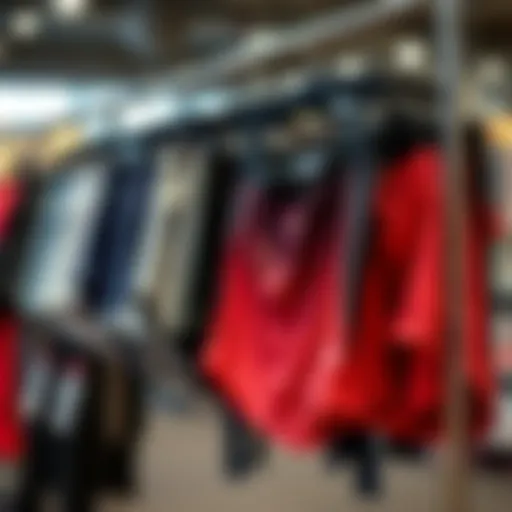Heat-Free Curling Techniques for Healthy Hair

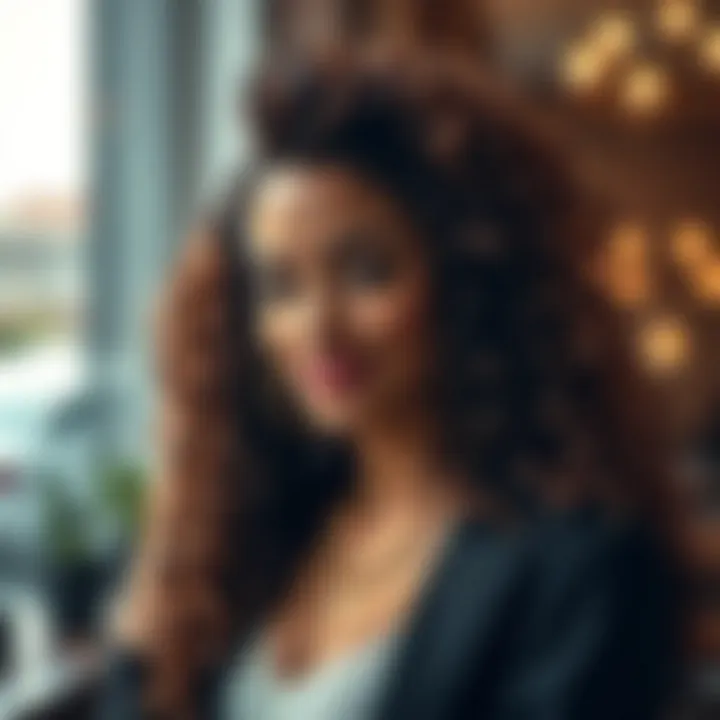
Intro
In a world where hair styling often champions heat, there's a growing movement aiming to break that mold. The conventional curling iron, a staple in many beauty routines, poses risks of damage that can outweigh its benefits. The good news is, plenty of effective, heat-free techniques for curling hair exist, tailored for various hair types. This guide will explore these alternatives, shining a light on practical, innovative options that promise to keep your hair healthy while achieving beautiful curls.
With a focus on sustainable and damage-free methods, it's essential to understand not just the styles but the materials and approaches available. From overnight methods that let you wake up to curls to the use of fabric-based tools and innovative devices, there’s no shortage of creativity and resourcefulness in the realm of hair styling.
So, whether you're a fashion designer looking for inspiration, a stylist keen on diversifying techniques, or perhaps a blogger in need of fresh content to engage your audience, you’ll find valuable insights here to make curling hair sans heat both achievable and enjoyable.
Fashion Trends
Current Seasonal Trends
As the seasons change, so do the trends in hair curling methods. This year has seen a significant shift as many fashion enthusiasts turn towards embracing natural beauty. Seasonal trends highlight soft, airy curls that offer a lived-in glamour without the harshness of hot tools. Natural textures are trending, with beachy waves and soft ringlets leading the charge.
"Fashion is not just about what you wear; it's also about how you care for what you wear. Hair health has become as important as looking good!"
Innovative products, such as heat-free styling tools made from satin or innovative wraps, have taken center stage, aligning perfectly with the growing trend towards sustainability. These products help achieve those sought-after curls without compromising hair integrity, emphasizing a polished yet effortless look that resonates well with current fashion sentiments.
Influential Fashion Icons
Fashion icons have played an instrumental role in championing these heat-free methods. Figures such as Zendaya and Billie Eilish, noted for their bold hair choices, often opt for styles that showcase healthy, textured curls. Their influence encourages followers to experiment with heat-free styling.
By incorporating these trends, stylists can better connect their services with the current demands of clientele who desire beautiful results without introducing heat. As more celebrities and influencers showcase their stunning curls achieved without the use of heat, it reinforces the notion that you can have style with care.
Styling Tips
Outfits for Different Occasions
To accompany your beautiful curls, choosing the right outfit is crucial. For casual outings, consider soft fabrics and relaxed silhouettes that complement your curls, like flowy dresses or oversized blouses. For more formal events, sleek tailored pieces enhance the elegance of soft curls, creating a sophisticated balance.
Mix and Match Techniques
The beauty of heat-free curling methods lies in their versatility. Here are some popular choices:
- Braid and Sleep: Simply braid damp hair before bed for a gentle wave by morning.
- Fabric Curlers: Using strips of fabric, twist sections of hair around them and tie at the ends for tight curls.
- Pin Curls: Roll up small sections of hair and pin them flat against the scalp for classic, defined curls.
Experimenting with these methods allows room for creativity in styling. The emphasis is on mixing techniques to find what works best for individual hair types, promoting a tailored approach to heat-free styling.
By adopting these alternative techniques, we encourage the continuation of a healthier hair narrative, freeing ourselves from the dependence on heat styling tools. For those interested in the nuances of hair health and styling, this guide can be your go-to resource.
Understanding the Need for Heat-Free Styling
In an age where haircare has evolved significantly, the quest for beautiful styles without the damage associated with heat has become paramount. Traditional styling tools like curling irons and blow dryers, while effective, often come with a hefty price tag for hair health. Understanding the need for heat-free styling isn’t just a trend; it's a necessary conversation we must have, especially for those keen on maintaining hair integrity while still looking fabulous.
The Risks of Heat Exposure
Many people underestimate the risks sweeping through the hairstyling scene—heat exposure is far from innocuous. Regular use of heat styling tools can lead to irreversible damage, like dryness, split ends, and even hair breakage. Think about it: every time you crank up the temperature, your hair takes a hit, losing essential moisture and resilience.
The situation becomes more dire when considering that certain hair types are naturally more sensitive to heat. For instance, fine or curly hair might fry like bacon, while thicker hair could withstand the heat better—but even it has its limits. Prolonged exposure to high temperatures can change the structure of hair, weakening its fiber and harming its ability to hold styles. This creates a vicious cycle where more heat is needed to achieve that perfect curl or wave, perpetuating the cycle of damage.
"Prevention is better than cure, especially when it comes to your hair's health.”
If statistics are your thing, consider this: a study from the International Journal of Trichology notes that heat-related damage is a significant concern among individuals using styling tools regularly. Why put your hair through the wringer when alternatives exist? Mindfully choosing heat-free methods not only allows for creativity in hairstyling but promotes sustainability and longevity in your hair's health.
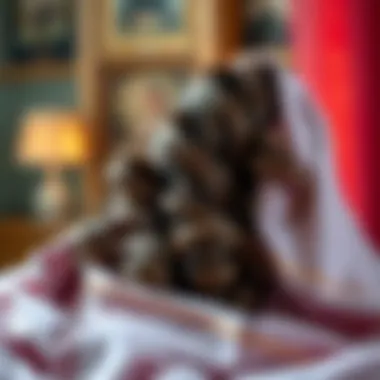
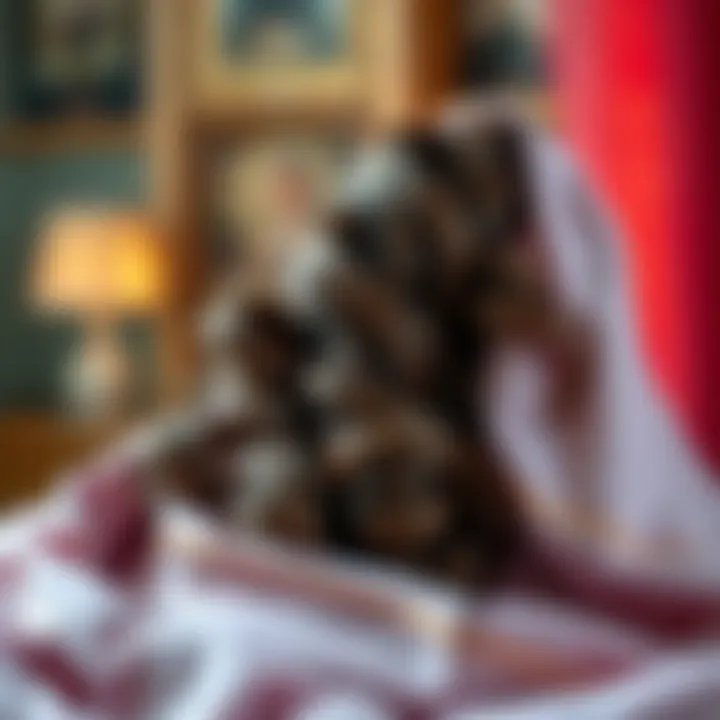
Hair Texture and Heat Sensitivity
Diving deeper, we arrive at a crucial factor: hair texture. Different hair types have unique characteristics, affecting how they respond to both heat and alternative styling methods. For example, straight hair may fall flat quickly, whereas curls can hold well in low-humidity environments, yet lack volume under harsh styling methods. It’s essential to admire hair's individuality; not all curls blossom under the first touch of heat, and not all straight hair needs aggressive styling.
Some textures absorb heat faster, leading to quick changes in structure, while others might be downright resistant. Heat-sensitive hair types—such as those on the finer side—become brittle and weak, making heat-free solutions a more favorable avenue. On the flip side, coarser hair may tolerate some heat but require special care to retain moisture.
By appreciating these nuances, one can better select the right products and styling methods tailored to hair needs. A careful approach can amplify natural texture and create beautiful styles minus the risk, rewarding us with healthy, vivacious curls that catch the eye and retain their shine.
This understanding not only empowers you to make better choices for your hair but also ensures you remain in control of your styling journey, completed without a single hot tool in sight.
Overview of Heat-Free Curling Methods
The journey to beautiful, voluminous curls often raises a dilemma between aesthetics and hair health. Traditional heat styling methods, while effective, can harm the cuticle and weaken strands over time. In this section, we delve into an array of heat-free curling methods that not only foster healthy tresses but also embrace creativity in styling.
Heat-free curling methods hold immense value for anyone looking to transition away from damaging tools. By utilizing various techniques, individuals can achieve soft, bouncy curls that last. The benefits are twofold: not only do these methods protect hair integrity, but they also often save time and reduce the need for extensive products.
What sets these alternatives apart is their adaptability to all hair types. Whether coarse, fine, wavy, or straight, these methods can cater to a variety of textures, making them a popular choice among stylists and everyday users alike. By approaching curling from different angles, the possibilities for style flourish beyond the simplicity of heat.
Twist and Pin Techniques
Twist and pin is one of the simplest yet most efficient techniques available for achieving heat-free curls. It involves twisting sections of hair and securing them with pins or clips. This method can be advantageous for its ease and flexibility. To enhance longevity, consider applying a styling product before twisting. The tension of the twirl, compounded with the hold of the product, creates a springy curl that holds its shape over time.
Braiding for Natural Waves
Another classic technique is braiding, which is ideal for creating loose and natural waves. The process is straightforward: simply divide your hair into sections and braid them at night. For a more relaxed wave, opting for a loose braid works wonders. On the flip side, tighter braids lead to bouncier waves. Applying a leave-in conditioner prior to braiding can help tame frizz and provide nourishment overnight.
Using Fabric Tools
Fabric tools have gained popularity in heat-free curling methods, thanks to their cost-effective and creative nature. They can often be found lying around the house, making curls accessible without the price tag of modern heatless devices.
Hair Rags
Hair rags serve as an incredible and underrated choice for those seeking curls without heat. These strips of fabric, typically from an old t-shirt or a cloth, can be fashioned into rollers. The beauty of hair rags lies in their versatility. They can be cut to size, making it easy to manage them according to the desired curl tightness. Simply wrap sections of hair around the rag and tie it securely: simple as pie! The absence of friction from plastic rollers increases comfort during sleep while reducing the risk of breakage.
Old T-Shirts or Scarves
Old t-shirts or scarves are another effective tool in the heat-free arsenal. With their soft texture, they are gentle on the hair, decreasing the chance of damage. You can roll a section of hair around the fabric, similar to the hair rag technique. One significant advantage of using t-shirts is that they usually come with enough length to accommodate longer hair. Plus, repurposing worn fabric is an eco-friendly step worth noting. Just remember to use lighter fabrics so they don't weigh the curls down!
Using these heat-free methods, you maximize your chances of embracing your natural hair health while achieving stunning curls. The world of heatless styling welcomes both the seasoned stylist and those simply looking to experiment. It’s about finding what works best for you.
Tools for Curling Without Heat
In the quest for beautiful curls that don’t compromise hair health, understanding the array of tools available for heat-free curling is essential. These tools not only provide innovative ways to shape hair but also help to minimize the risk of damage. The choice of tool can significantly influence the outcome and ease of creating your desired style. Among the multitude of options, some stand out for their practicality, effectiveness, and ease of use.
Heatless Curling Sets
Heatless curling sets have gained traction for good reason. These kits typically include a range of tools specifically designed to create curls without the need for any electrical appliances. Most sets consist of soft rods, ribbons, or foam rollers that gently wrap around sections of hair.
Here’s why they earn a spot in your styling arsenal:
- Gentle on Hair: Unlike traditional styling tools that can fry strands, heatless curling sets rely solely on a wrapping technique that avoids heat altogether.
- Versatility: Most sets come with various sizes of rollers, allowing users to create everything from tight ringlets to loose beach waves.
- Ease of Use: With straightforward instructions, even those not skilled in hairstyling can achieve gorgeous curls.
Additionally, many heatless curling kits can be used during the night. You simply wrap your hair before bed and wake up to lovely curls. This method not only saves time in the morning but also elevates the comfort of styling hair without a struggle.
DIY Fabric Rollers
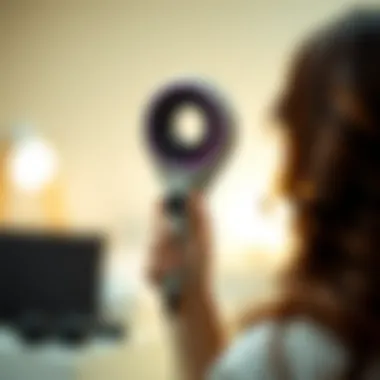

For those looking to personalize their hair routines, DIY fabric rollers present an economical and creative alternative. Crafting these rollers is easy, and they can even be made from items lying around your house. Using fabric instead of plastic or foam addresses concerns about hair tangling or snagging, as fabric is generally softer and more forgiving.
How to Create Your Own
Creating your own fabric rollers involves just a few simple steps. All you need is some old, soft fabric, scissors, and a sewing needle, or—as an even simpler option—some fabric glue. Here's a quick guide to get you started:
- Materials: Gather soft, flexible fabric like cotton, an old t-shirt, or even some thick fleece. Cut the fabric into strips roughly 2-3 inches wide and 10-12 inches long.
- Roller Formation: Take a strip of your chosen fabric and roll it into a cylindrical shape. You can secure it by tying or sewing the ends together.
- Applying: To use, wrap sections of damp hair around the roller, securing it with a knot or pin if necessary. For best results, allow hair to dry completely before unwinding the rollers.
This approach is both budget-friendly and customizable, as the texture and size of the fabric can affect the tightness of the curls produced. The DIY aspect can also be a fun project that adds a personal touch to your beauty routine, making it a popular choice among those who enjoy crafting.
While the journey to beautiful curls may diverge from traditional methods, the tools available for heat-free styling open the door to many possibilities. From specialized heatless curling sets to home-crafted fabric rollers, each offers unique benefits that cater to varied preferences and needs. Embracing these options not only champions hair health but revolutionizes the curling experience.
Step-by-Step Guides for Various Techniques
Understanding and mastering various techniques for heat-free styling is vital for achieving the curls you desire without damaging your hair. Each method offers its own set of benefits and considerations that cater to different hair types and personal preferences. By following a clear set of guidelines, you can ensure that the results are consistent and tailored to suit your unique hair characteristics. Plus, these techniques allow for creative flexibility, making it easy to experiment without the risk of heat damage.
The Scrunch and Hold Method
This technique stands out for its simplicity and effectiveness. The scrunch and hold method focuses on using products that enhance your natural curls while maintaining their health.
Best Products to Use
When it comes to selecting the ideal products for the scrunch and hold method, the right choice can make all the difference. Look for lightweight styling gels or creams that provide hold without weighing your hair down. A key characteristic of these products is their ability to define curls while offering nourishment.
Here are some popular options:
- Lightweight Mousse: Enhances volume and adds texture without stiffness. Good for fine hair types that need a bit of lift.
- Curl-Defining Creams: Designed to moisturize while providing hold, these creams work magic for medium to thick hair. You can expect bouncy, well-formed curls without frizz.
- Sea Salt Spray: Adds a beachy vibe to your curls, perfect for a casual look. However, it may dry out hair if used excessively, so moderation is key.
The unique feature of these products is their capacity to offer both styling and treatment benefits. For example, using a curl cream infused with natural oils can help improve hair texture over time. However, one disadvantage is the potential for some products to leave a residue if not rinsed out properly. Overall, the right products can significantly enhance the scrunch and hold technique, leading to beautiful and healthy curls.
Robust Sleeping Styles
This method takes advantage of overnight styling to achieve curls effortlessly. It’s particularly effective for those who have a busy schedule or prefer a no-fuss morning routine.
Preparation for Overnight Curls
The preparation for overnight curls is crucial for achieving your desired look in the morning. This involves setting your hair in a way that retains moisture and shape while you sleep. Using soft fabric scrunchies or braiding will prevent frizz and breakage. A key characteristic is that it allows your curls to set without the pressure of heat exposure.
Steps to Prepare:
- Start with damp, not soaking wet, hair—this is essential. Too much water can lead to dampness, which makes curls droopy.
- Apply your choice of product liberally but evenly. Make sure each strand is thoroughly coated to enhance curl formation.
- Choose between twists, braids, or fabric rollers to shape your hair, ensuring they are secure yet not too tight.
The unique feature of this approach is how customizable it can be. You can adjust the size of your twists or braids to determine the tightness of your curls. An added advantage is waking up to nicely styled hair, saving you time in the morning. However, those with sensitive scalps may find sleeping with styling tools like fabric rollers uncomfortable.
In summary, these step-by-step guides facilitate achieving beautiful curls through heat-free methods, empowering you to embrace different styling techniques while keeping your hair's health intact. Whether you opt for the scrunch and hold method or the robust sleeping styles, following these detailed guides ensures a successful and hassle-free experience.
Choosing Products for Heat-Free Styling
Choosing the right products for heat-free styling is not just a matter of preference; it directly influences the texture, health, and longevity of the hairstyles created. In the quest to avoid traditional heating methods, utilizing specific products designed for this purpose can make a world of difference. Products play a crucial role in ensuring that styles hold while maintaining the integrity of the hair. Moreover, considering individual hair types is essential to achieve optimal results.
Hair Type Considerations
Different hair types react uniquely to styling techniques and products. For instance, if someone has fine hair, they may benefit from lighter products that won't weigh their strands down. On the contrary, those with thick or coarse hair might require heavier formulations that provide better moisture and hold.
It's important to take a moment to assess the texture, elasticity, and overall condition of your hair. It’s not just about curling; it’s about doing it in a manner that respects what your hair naturally is. When selecting heat-free styling products, asking a few questions can help:
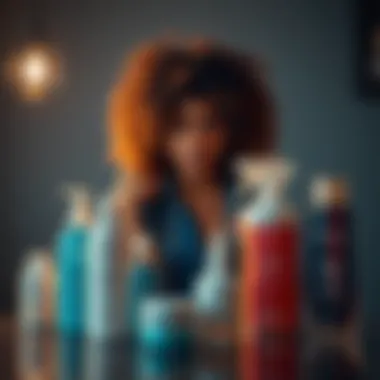

- What is my hair's porosity?
- Is it prone to dryness or oiliness?
- Do I need extra hydration or hold?
Answering these can steer you toward the best choices for heat-free styling.
Suitable Hair Products
The right hair products are essential when transitioning from heat-based techniques to heat-free methods. Two of the most beneficial types of products in this domain are leave-in conditioners and styling creams. Both have unique attributes that cater to different needs and styling preferences.
Leave-In Conditioners
When it comes to nurturing hair while styling, leave-in conditioners hold a prominent place. They are designed to provide long-lasting moisture and protection, an aspect that aligns perfectly with heat-free styling goals. One of the key characteristics of these conditioners is their ability to enhance manageability and softness, making hair easier to manipulate into curls without the use of heat.
One unique feature of leave-in conditioners is that they can double as a protective barrier against environmental factors such as humidity and UV rays. This is particularly advantageous when styling with methods that take several hours, or even overnight.
However, it’s worth noting that overusing leave-in conditioners can lead to greasiness if not washed out properly. Finding the right product for your hair type can mitigate this issue, ensuring that the benefits outweigh any drawbacks.
Styling Creams
Styling creams are another excellent option when venturing into heat-free curling techniques. They excel in providing texture and definition, key aspects needed for achieving curls without heat. The creamy consistency allows for even application, making them a popular choice among those looking for a natural finish.
The distinctive feature of styling creams is their ability to deliver medium to firm hold without the stiffness often associated with traditional gels. This quality allows curls to maintain their shape while still feeling flexible and touchable, an appealing aspect for many.
However, like any product, there can be disadvantages. Some styling creams may contain alcohol or sulfates, which can be drying to the hair. Therefore, scrutinizing the ingredient list is essential to ensure compatibility with your hair’s needs.
Choosing the right products with careful consideration of your specific hair type and the particular needs of the styling method can significantly enhance your heat-free styling journey. By aligning product characteristics with your hair’s unique demands, you’re setting the stage for curls that not only look great but also promote hair health.
The Impact on Hair Health
When it comes to hairstyling, the health of our locks should be a foremost consideration. Heat styling tools, like curling irons, may deliver instant results, but they often come with a price tag in terms of damage. Understanding the impact on hair health is crucial, especially in a world where heat-free methods are gaining traction. These alternatives not only promise aesthetically pleasing results but also contribute positively to the overall condition of your hair.
Analyzing Hair Damage
Hair damage can stem from various sources, with excessive heat being a primary culprit. High temperatures strip the hair of moisture, leading to dryness and breakage. This damage manifests in several ways:
- Split Ends: Prolonged exposure to heat can fray the end of strands, creating the unpleasant appearance of split ends.
- Texture Changes: Heated tools can alter the natural structure of hair, making it coarse or brittle.
- Color Fading: For those who dye their hair, heat can fade color rapidly, diminishing the vibrancy of hues.
- Lack of Shine: Damage often robs hair of its natural luster, leaving it looking dull and lackluster.
Combatting these issues starts with recognizing the signs and opting for healthier alternatives. Techniques that avoid heat not only protect the hair but also promote its inherent beauty. For instance, using fabric-based curling methods results in defined curls that maintain moisture, reducing the likelihood of breakage.
Advantages of Heatless Techniques
Choosing heatless methods of curling comes with a myriad of benefits. Below are some distinct advantages that these techniques offer:
- Minimization of Damage: By eliminating heat, you’re significantly reducing the risk of damage to your hair. This means healthier strands in the long run.
- Enhanced Moisture Retention: Many heatless methods, like braiding or using curlers, allow the hair to retain moisture. This moisture is vital for elasticity and shine.
- Flexibility in Styling: Heatless styles can be created ahead of time, allowing you to wake up with beautiful curls without the need for daily styling. This flexibility saves time and streamlines your morning routines.
- Cost-Effective: Many heatless techniques utilize everyday household items, making them more accessible and economical compared to purchasing expensive styling tools.
- Long-Lasting Results: Styles created using heatless methods often last longer than their heated counterparts, as they rely on the natural structure and moisture of the hair.
"The choice to embrace heat-free styling isn’t just about aesthetic preferences - it’s a commitment to the longevity and health of one’s hair."
In summary, the positive impact on hair health from utilizing heat-free curling techniques is significant. An awareness of potential damage from heat and the benefits associated with alternatives allows individuals to make informed choices that not only beautify but also safeguard their hair in the long haul. As more people prioritize hair health, the trend towards heat-free methods is likely to continue, enabling a vibrant, healthy mane without compromise.
Ending: Embracing Heat-Free Curling
The significance of this exploration into heat-free curling cannot be understated. In a world where hair health is increasingly taking the spotlight, methods that avoid heat apply clear benefits. First off, let’s talk about preservation. Hair is delicate, akin to a finely woven fabric; expose it too much to direct heat, and it can fray or break. Embracing heat-free curling not just conserves the natural structure but also enhances the overall health and appearance of one’s hair. Good hair days start with good hair longevity.
Final Thoughts on Hair Care
As we close this discussion, it’s more than just creating beautiful curls without harming our precious locks. It’s about nurturing and caring for them every step of the way. Consider this: while quick fixes from heated styling tools may offer instant results, the glossy shine and bouncy volume achieved through heat-free methods often hold a deeper, longer-lasting significance. This approach aligns with an ever-growing consciousness towards health, sustainability, and self-care. In today’s fast-paced world, tuning into what our hair genuinely needs can transform the mundane into the marvelous.
Encouragement to Explore Options
One might think, “Heat-free? Sounds like too much work!” but it doesn’t have to be. There are a plethora of methods just waiting to be discovered. Whether it’s the trusty twist-and-pin technique or fabric rollers fashioned from old t-shirts, these options provide a fresh perspective on styling. Experimenting with different tools and techniques can ignite creativity and discover what works best for individual hair types. Don't hesitate to blend these methods with existing routines. After all, the journey in personal styling should be filled with exploration.
In wrapping everything up, one can say that beauty lies not just in the results, but in the approach. Choose wisely, style consciously, and let your curls speak volumes!







